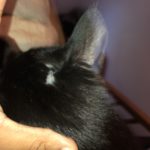Hello!
I would first like to start with my sincere gratitude that you are being so dedicated and diligent in taking care of your kitty. For too many cat owners diabetes is just something they refuse to address and hence the statistics on this disease wrt cats is abysmal.
Next I have to strongly (urgently) recommend that you stay under the care of a veterinarian for this one. If you are unhappy with your current vet seek out another. I would recommend finding a feline exclusive practitioner. Then ask about diet, exercise and treatment plan. I cannot (not should anyone!) other than your vet recommend or influence your treatment plan. This disease is too complicated and too complex to do online.
I have lots of videos and blogs with all of my preference treatment options. So please visit them.
Also I recommend wet food only and learning how to check the blood glucose at home. Also I think that harness training to go on walks for exercise is immensely helpful.
I really have to say that I have no preference on insulin. Get one you can consistently afford and start there. But don’t switch around. Makes regulating too confusing. Next talk to your vet a lot at first. Until you can better adjust to a new food, exercise and monitoring plan.
I hope this helps. Please keep me posted. Good luck!
My cat has been scratching her neck and behind her ears lately (which is normal), but when i watched her do it, today, clumps of her hair came out. I looked at her fur and noticed a couple kinda bold spots. Her skin isn’t red or anything, you can just see her skin more. I am wondering if this is just a shedding thing or if something else is wrong. I live in Illinois so weather is pretty average, and my cat is an indoor cat. She has been throwing up a lot lately, but i think thats just because she eats so fast. She also is allergic to some food. The vet said she is allergic to the protein in some types of meat, she will get red spots on her face and ears but after trying a couple types of food i think the rash is mostly gone. I really hope this is a normal thing but i am not sure. The bold spots keep getting worse with every scratch. What should i do?
Comments
Hello and thank you everyone for reading this post. I am writing this here in the hopes that I find some guidance. The vets I have taken my cat too I feel are only out to make money off of me and to make my cat insulin dependent. I could be wrong but based on what I have tried I have seen better results. My male cat of about 15-18 years of age has been diagnosed with diabetes since April of 2019. His original Blood glucose was 377 at the time of the original Veterinary office visit.
I was told to give him Vetsulin insulin at 1 unit, however the vet only sold me insulin with no syringes. After waiting a week for them to get me syringes, which were on back order, I gave up and took him to an emergency vet. The emergency vet put him on md and wd wet and dry food. Instructions were to give him Prozinc 3 units every 12 hours and feed the wet food at the time of injection and to leave the dry food out 24/7. After one week of still not injecting insulin on my own accord in hopes that the new diet would put the diabetes into remission, he went from weighing 15.93lbs to 17lbs.
From April to July he stayed at the same weight but showed no signs of improvement except for his “levels” on a blood test that were all in better ranges. His BG HAS BEEN 600 since he has been under the care of this vet who then wanted to curve him and remarked that he should increase the insulin.
I decided to take matters into my own hands, joined forums and educated myself on feline diabetes as best as I could. I started home testing and started him on Young Again Mature dry food ZERO Carb Tiki cat wet food. He is now weighing in at 14.73lbs. I also lowered his insulin to 2.75 and at mid curve his BG is 377. At the end of his cycle it is 477. My question now is how do I get him into the normal range of 80-120 Blood glucose safely without seeing adverse symptoms from too much Prozinc?







Good morning???? I’m sorry about your cat. My first guess is that there is some sort of skin irritation or allergy. Although it does not look red in the photos, the fact that she is so itchy/uncomfortable is what makes me think along those lines. I know you said the weather is average…but sometimes if it goes from humid to dry or vice verse, it might lead to a skin reaction.